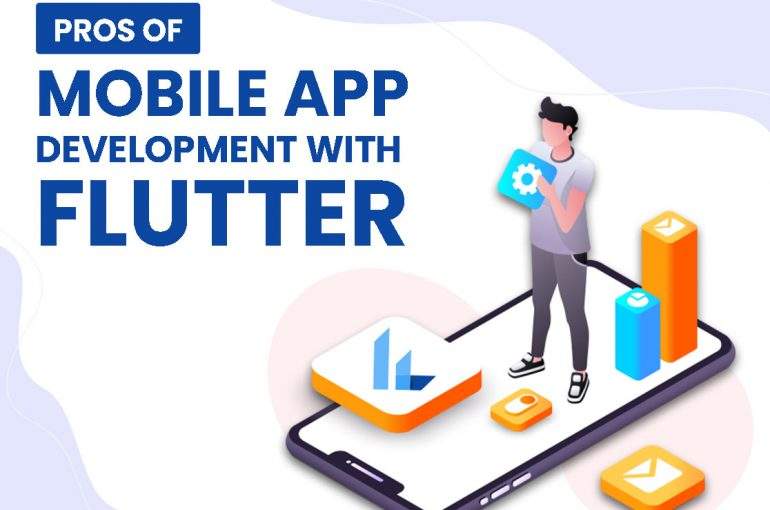What is Flutter used for?
Flutter is one of the eminent solutions to design and develop applications for Android and iOS, without having to write any program in a different code base for an individual platform. The smartphone versions of these substantial apps function as real, native apps on Apple and Android smart devices and are put together for the respective platform before its issue. They do not require a runtime component or a browser. Utilizing a similar code-base makes it possible to create and design web applications for browsers as well as native programs for Windows, Linux and macOS.
Pros of using Flutter for app development
- Single code-base for multiple platforms– Developers need to write a single code-base for multiple apps, which can be seamlessly implemented on both Android and iOS platforms. As flutter has its features, widgets and designs, it does not rely on other platforms. It means you have the same mobile app on two different platforms. Furthermore, it is also possible to differentiate between your apps while using flutter technology.
- Faster code creation– Flutter technology means faster and more dynamic mobile app development for users and developers. One can effortlessly make changes and modifications to the code-base and immediately see the outcomes in the app. It is also known as a hot reload, which usually takes up to Milliseconds and enables developers and designers to add features, functionalities, fix bugs, and experiment more quickly. It is one of the most significant features of Flutter that every top Flutter app development developer adores. Hot reload is also very compatible in developer-designer cooperation when they want to improvise or experiment with an app’s look-and-feel and check the functionality effects on the spot. Different types of code alterations can be hot reloaded. However, there is a list of changes that require a full restart.
- Less assessment required– If you have the same mobile app for two platforms, it means you require less testing. The Quality Assurance process can be accelerated, eventually saving your time. Due to the shared code-base, developers only have to write and generate automated tests once. Furthermore, there’s only a single app to check, Quality Assurance specialists have less work to do and more time to save. Of course, if your apps are different in other ways, they must be tested on both platforms.
- Faster apps- Flutter apps work more seamlessly and rapidly, without hanging and loading while scrolling them. If you want to understand and know more about why and how it works from a technical point of view, you need to dig a little deeper. Also, you can check out various blogs regarding Flutter documentation that talks and explains best practices for mobile app performance.
- Aesthetic designs– Flutter technology is specifically designed to make app development more simple and creative. It allows them to create their widgets or update the existing ones. You can browse and check out different catalogues of Flutter’s widgets and see instances such as Material Design widgets and Cupertino widgets.
Wrapping up!!Flutter, in our opinion, has far more vital benefits than risks for organizations and app development teams. Flutter provides a fantastic opportunity to create beautiful, aesthetic, high-performance, and outstanding mobile apps that meet all your unique needs and requirements. Flutter is worth considering, especially if you need a mobile app that works on both iOS and Android. It can also save you time and proves to be a cost-effective solution. Furthermore, Flutter is still in its early stages of development and advancements. So, if you opt to use Flutter, think about all the advanced features and functionalities for creating a state-of-the-art app.


